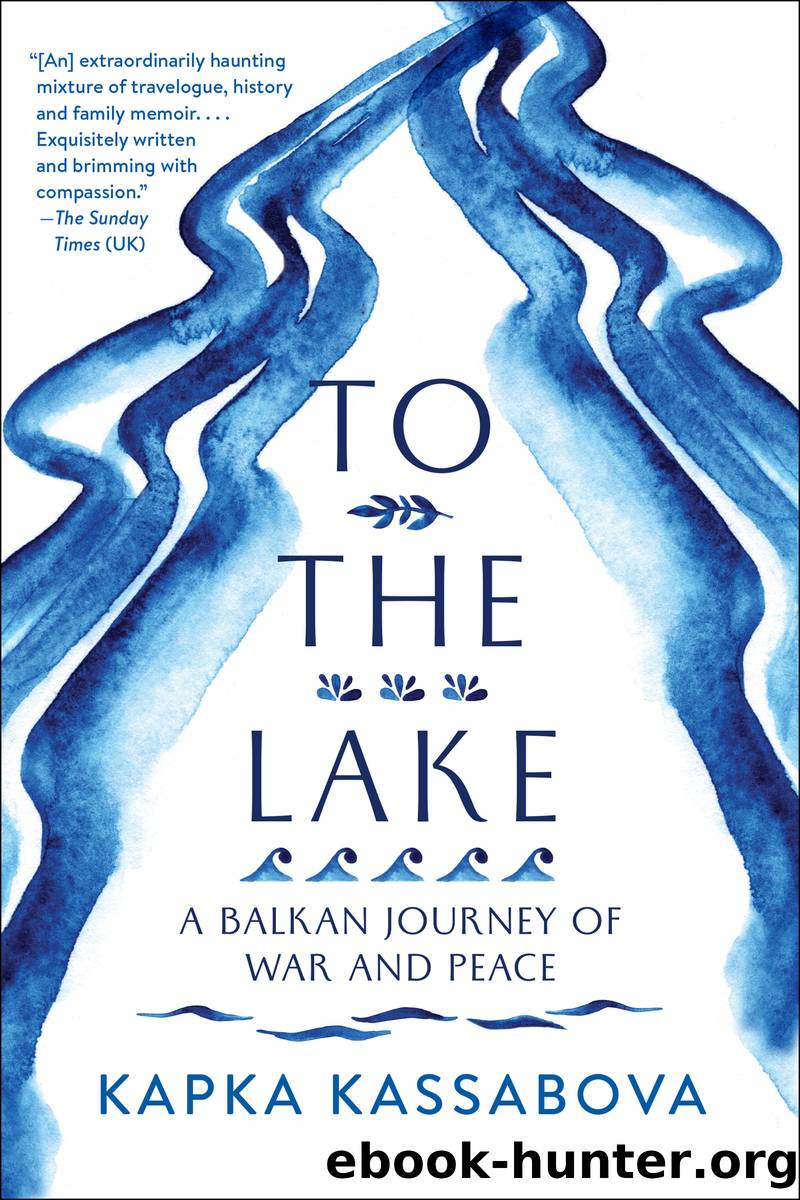To the Lake by Kapka Kassabova

Author:Kapka Kassabova [Kassabova, Kapka]
Language: eng
Format: epub
ISBN: 978-1-64445-124-3
Publisher: Graywolf Press
Published: 2020-08-14T16:00:00+00:00
Fraser saw long stretches of the Roman road, then they’d suddenly plunge into a precipice, suggesting that the shape of the valleys had shifted over time.
Riding here around the same time, munching on oranges given to her by Elbasan’s governor, Edith Durham notes that this section of the Egnatian Way was completely destroyed by the Turks in the wake of the Ilinden Uprising, ‘in a blind rage, with the intent to destroy all communications as far as possible’.
Non-existent as it was then, this had been a major trans-Balkan itinerary, the highway between the Adriatic and the Aegean. Those who sought passage into the Balkans and Asia had to take it. Even now, on the tar-sealed road, we were never far from hairpin bends and tumbling boulders. Which gave me and Tino some idea of what it must have been like for our ancestors to move across this terrain at all times, in all weathers, and pretty much until they dropped dead from their horses.
My mother had given me an old family memoir. The author was a maternal uncle of Ljubitsa’s, a civil servant in Bulgaria, where he emigrated in the late 1800s. Subsequent generations would acquire university degrees and sedentary jobs, leading to my life of books and Tino’s nocturnal Internet vigils in stock markets and jazz clubs. We had long grown disconnected from the land. But our distant predecessors had merged with it. The early Gardeners had done it through gardening, the early Karadimchevs through road trade.
The Karadimchev clan of my great-grandmother’s are traced back to 1700. There was an Ohrid man known as Dimche Karata, Dimche the Black. He was of darker complexion than usual – perhaps he had Arab blood. Dimche the Black amassed a fortune and left behind mansions by the kalé. He was a trader and so were his son and grandson, driving their caravans of horses and mules along the main trading route of the Egnatian Way: Salonica–Bitola–Ohrid–Elbasan–Durrës. They dealt in fish, mutton, olives, oil, wool, tobacco and other official and unofficial goods, and they also carried the mail between these remote stations, along the ‘government post-road’ – because there were no postmen in this corner of the Empire. Roads were too dangerous, conditions too gruelling.
The grandson was named Dimo, after Dimche the Black, and this Dimo had forty horses and a special teskere (pass) from the sultan, which served as passport and trading licence. Travelling traders like him were called kiradjias, and this was the single most dangerous métier at the time. This is how we find our great-great-great-great-great uncle Dimo with his caravan. He was from Ohrid but spent most of the year on the road, where he was known as Dimo the Albanian. He wore the black-embroidered baggy trousers of white wool, a great hooded black woollen cape, and the white Albanian fez. He had a native’s command of Albanian and Turkish, and must have spoken Greek and a Bulgarian dialect, or both.
In the 1700s, the British diarist Mary Wortley Montagu
Download
This site does not store any files on its server. We only index and link to content provided by other sites. Please contact the content providers to delete copyright contents if any and email us, we'll remove relevant links or contents immediately.
| Diaries & Journals | Essays |
| Letters | Speeches |
The Rules Do Not Apply by Ariel Levy(3897)
Bluets by Maggie Nelson(3704)
Too Much and Not the Mood by Durga Chew-Bose(3689)
Pre-Suasion: A Revolutionary Way to Influence and Persuade by Robert Cialdini(3404)
The Motorcycle Diaries by Ernesto Che Guevara(3325)
Walking by Henry David Thoreau(3227)
What If This Were Enough? by Heather Havrilesky(2943)
The Day I Stopped Drinking Milk by Sudha Murty(2851)
Schaum's Quick Guide to Writing Great Short Stories by Margaret Lucke(2797)
The Daily Stoic by Holiday Ryan & Hanselman Stephen(2703)
Why I Write by George Orwell(2354)
Letters From a Stoic by Seneca(2330)
The Social Psychology of Inequality by Unknown(2304)
A Short History of Nearly Everything by Bryson Bill(2131)
Feel Free by Zadie Smith(2094)
Insomniac City by Bill Hayes(2080)
A Burst of Light by Audre Lorde(1978)
Upstream by Mary Oliver(1931)
Miami by Joan Didion(1877)
